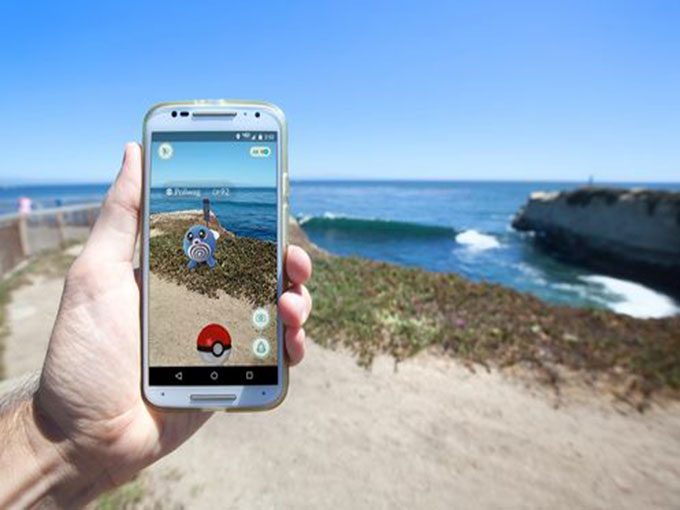Moving from a pocket game of the 1990s to the pocket machines of today, Pokémon fans worldwide are out on the streets chasing down creatures with the release of the instant-hit mobile game Pokémon GO.
The free iOS and Android mobile game uses the clock and GPS of a user’s phone to detect location and show Pokémon creatures as they appear using augmented reality (AR). Users try and catch the creatures as they come across Pokéstops and Gyms. Making users move throughout the real world to catch the virtual creatures has been praised for increasing exercise levels and alleviating depression, but it has also been criticized for safety concerns.
The companies behind the game, US-based software co Niantic Labs, Nintendo and the Pokémon Company, have staggered the release of the game globally in order to keep servers from crashing. Only one week after going live, it’s estimated that the game has surpassed 15 million downloads in the US, and users are spending an average of 33 minutes a day playing the game, according to iOS usage data reported by USA Today.
Devon MacDonald, chief strategy officer at ad agency Mindshare Canada, where the app is still currently unavailable, says the familiarity of the Pokémon brand, the excitement around the first at-scale AR app for consumers and its accessibility all contributed to the app’s immediate success.
The game already has a following among coveted millennials who have been Pokémon enthusiasts for some time. In addition, GO is now tapping into younger users whose parents are downloading it on their behalf.
Awane Jones, co-founder and CEO at AR and VR-focused digital agency Merchlar, says awareness of AR has been low compared with how long it has been available, but the popularity of Pokémon GO proves that people are keen to try it.
“Naturally, the general impression was that the technology was inaccessible, or that people wouldn’t want to try out a new, foreign technology,” he says. “Now, thanks to Pokémon GO, people are realizing that in fact AR has been around us for some time already, and that it’s not hard to use or intimidating. It has proven that the adoption of AR can start right from the palm of your hands from the mobile devices we already have.”
Advertising opportunities weren’t available on the game for launch, but Niantic CEO John Hanke confirmed to the Financial Times this week that sponsored stops will be coming soon.
But the lack of advertising within the game hasn’t stopped brands and locations from jumping on the bandwagon. For example, ad agency Huge has a cafe in Atlanta that’s located between two Pokéstops. In order to attract visitors to its location it has been placing Lures, which can be purchased to increase the quality of Pokémon available there.
According to MacDonald, Lures provide an immediate opportunity for brands to latch onto the game, though he cautions marketers to only deploy them if the brand is a good fit with the audience.
“Like free balloons or a toaster giveaway, unless there is a link to the brand that provides relevancy to the user the experience will be quickly forgotten and investment squandered,” he says.
From Media in Canada.

























